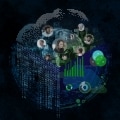Embracing digital tax transformation has been saved

Perspectives
Embracing digital tax transformation
From manual to automated tax processes
With tax reporting largely driven by transactional data, many traditional manual tax processes may not meet the data needs of modern Tax departments. This is where the implementation of technology and automation tools will be key in adding value to the business. And with the right information, leaders can draft a road map to guide their digital journey.

Global tax changes, shifting regulatory requirements spark action:
Digital Transformation for corporate Tax functions is anchored in clean, complete, relevant, and timely business data from enterprise resource planning (ERP) systems. Benefits to a Tax function from a properly planned digital transformation cover the spectrum of real-time reporting, improved tax transparency, confidence in the data for planning purposes, efficient compliance, and ultimately, tax reporting, which is an important component of financial reporting. Tax reporting of the future is largely driven by transactional data, so transformation within the ERP also starts further up the chain in critical business processes designed and built for the business, along with tax data needs embedded.

As tax authorities become more sophisticated, they’re requiring more data, more frequently, from taxpayers, putting additional demands on Tax departments. As a result, many traditional manual tax processes may not meet the data needs of modern Tax departments.
So, what do tax professionals need to help meet the data requirements of modern Tax departments?

Data-wrangling tools can be used to extract and format the data required to comply with multiple jurisdictional rules. ERP solutions in the cloud can integrate tax technologies with other finance and business applications

Data lakes—centralized repositories for structured and unstructured data—assist in increasing convenience and ease for data storage. A recent study by Gartner1 showed that 57% of data and analytics leaders are investing in data warehouses, 46% are using data hubs, and 39% are now using data lakes.

API is a software interface that allows two applications to interact with each other without any user intervention. In simple terms, API means a software code that can be accessed or executed. Software needs to change over time, and APIs help to anticipate changes.
Today’s Tax function—and the Tax function of tomorrow—requires tax professionals to have access to real-time, transaction-level data. And they need to be able to trust its accuracy. This will be no different as clients prepare to respond to the Organisation for Economic Co-operation and Development (OECD) Pillar Two model and need to collect information globally in a very short time frame.
Transitioning to cloud-based applications can enhance risk management through consistent software updates, in order to address future regulations and provide greater visibility into the data, while providing an accessible digital audit trail.
For multinationals with large global footprints and tax exposures, a move to the cloud can allow group-level tax leaders and head-office executives unprecedented insight into the company’s global tax positions, risks, and opportunities.

Tax leaders are increasingly turning to technology for answers—and finding new ways to add value to the business. With the right information, leaders can draft a road map to guide their digital journey and lead Tax functions to:
- Add more value in line with the CFO’s priorities by engaging across traditional organizational boundaries
- Align with organizational goals
- Engage with IT, Business, and Finance functions
- Understand how to plan the approach—big-picture thinking
- Move beyond traditional imperatives of ensuring quality and maintaining control in the management of global tax
Tax leaders and business executives should ensure the concerns of the Tax function are represented when considering their organization-wide data strategy and digital transformation journey. This will be imperative in ensuring the organization is equipped to meet current and future business requirements imposed by both external and internal stakeholders.

From manual to automated tax processes
Global tax changes, shifting regulatory requirements spark action
Digital Transformation for corporate Tax functions is anchored in clean, complete, relevant, and timely business data from enterprise resource planning (ERP) systems.

Interested in learning more?
Explore cloud ERP systems to gain immediate tangible benefits
Get in touch
 |
Jennifer Deutsch |
 |
Stephane Lunan |
|||
 |
Brad Ford |
 |
Ravi Gupta |
Recommendations
Taking tax to the cloud
During the pandemic, leaders are speeding their move to cloud-based ERP solutions—and increasingly seeing the importance of seating tax at the planning table.


